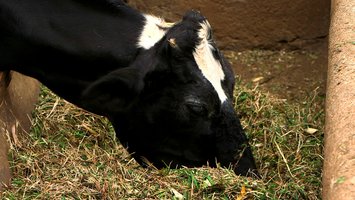
By George Munene
Milk boosters can be pellet or flour-based, and usually contain highly absorbable rumen bypass protein, rumen bypass lipids and fats. They are also compacted with high-energy products, enzymes, yeast, micro and macronutrients, as well as calcium and mineral salts.
Working with farmers, Yakub Bachu—a livestock production and animal husbandry consultant—has shown the use of milk boosters increases milk output by three to four litres in standard Friesian and Ayrshire cattle that weigh about 500kg and produce 15-20 litres of milk daily. Under good management and refined feeding methods that ensure the cow has its base requirements in energy and protein met, he says, this increase could reach six to seven litres of added production.
Milk boosters increase gut microbial growth and activity so as to reduce wastage and convert more feed into milk. There are various varieties of milk boosters available to farmers in the Kenyan market, but most are not tailored to the particular geography and feeding programs of specific farmers.
Related News: Farmers suffer milk collapse on changing cows’ environment
Bachu, formerly a Livestock Research assistant at One Acre Fund, has been involved in the agribusiness value chain as a farmer, within the corporate space and as a freelance consultant for 8 years now. This has made him acutely aware of the challenges farmers face in transmuting the promised high yields on the back of packaging bags to actual production on their farms.
The milk booster makes more metabolizable protein available to help a cow meet the amino acid requirements for maximum milk production and feed efficiency. It is mixed in with dairy meal or sprinkled into a Total Mixed Ration (TMR). For every cow he says, 200-100 grams is given daily depending on the cow’s production level, weight and post-calving stage. It not only improves milk production but also staves off a significant drop in milk output after production plateaus and starts to drop once the cow reaches its peak; usually after 80-100 days. At early lactation when milk production is at its peak a farmer can give 200-150 grams daily, falling to 140-100 grams at mid-lactation and to just 120-100 grams at late lactation.
The milk booster is dual purpose; besides added milk production, it improves the cow’s health and provide macronutrients such as calcium critical during pregnancy. Bachu recommends that farmers give 80-60 grams of the booster one month to calving and gradually increase intake by at least 10 grams to reach 100 grams a couple of days to the calving date.
“Essentially, I am targeting to get the cow rumen to work efficiently in converting feed into milk and at the same time provide the animal with balanced nutrients for support of tissues and stimulation of udder alveoli to increase in milk production.” Bachu says. “To realise maximum benefits, we work with farmers to implement modernised feeding methods; you cannot just feed freshly cut grass from the shamba directly to the animal, it will need to be weathered and/or fermented. We also take into account the particular geographical location and tweak the milk booster formulation. Areas such as Elbagon, Njoro and Kajiado have soils with high salinity—this necessitates the amount of trace salt be lesser compared to that meant for other regions.” He also conducts manure evaluation to determine the extent of digestion and fermentation of consumed feeds.
Related News: Salt supplements prevent milk fever, retained placenta and downer cow disease in cows after giving birth
Related News: Feeding cows on a balanced diet improves milk production
Withering, chopping and fermenting feeds all helps to improve intestinal digestibility and reduce the amount of energy a cow expends in chewing cud and digestion.
The benefits of the milk booster he says will be quite evident early on in medium to low yielders; in about five days if your cow’s hairs had a brown hue caused by mineral deficiency they will start to turn a healthier black, with time the milk output will increase and so will its density. In high yielders, these changes will take a while longer to manifest as the minerals are slower to be absorbed into their bodies.
In time, Bachu says, the amount of dairy meal given to the cow can be halved and milk production will remain relatively similar.
He is working with farmers in Githurai, Bungoma and Bomet and has partnerships with livestock extensionists in Eldoret, Nakuru and Nyeri. He sells a kilogram of the milk booster for Sh200-250 depending on the distance to farmers.
Yakub Bachu: 0716799341
















Comments powered by CComment